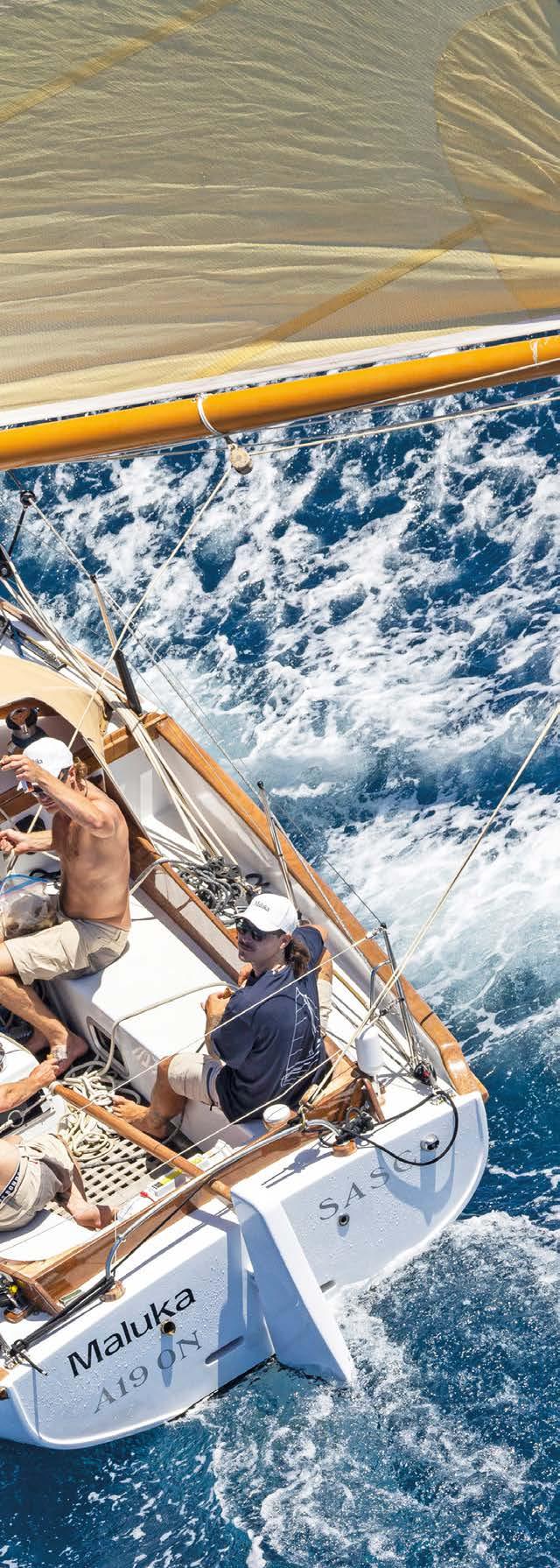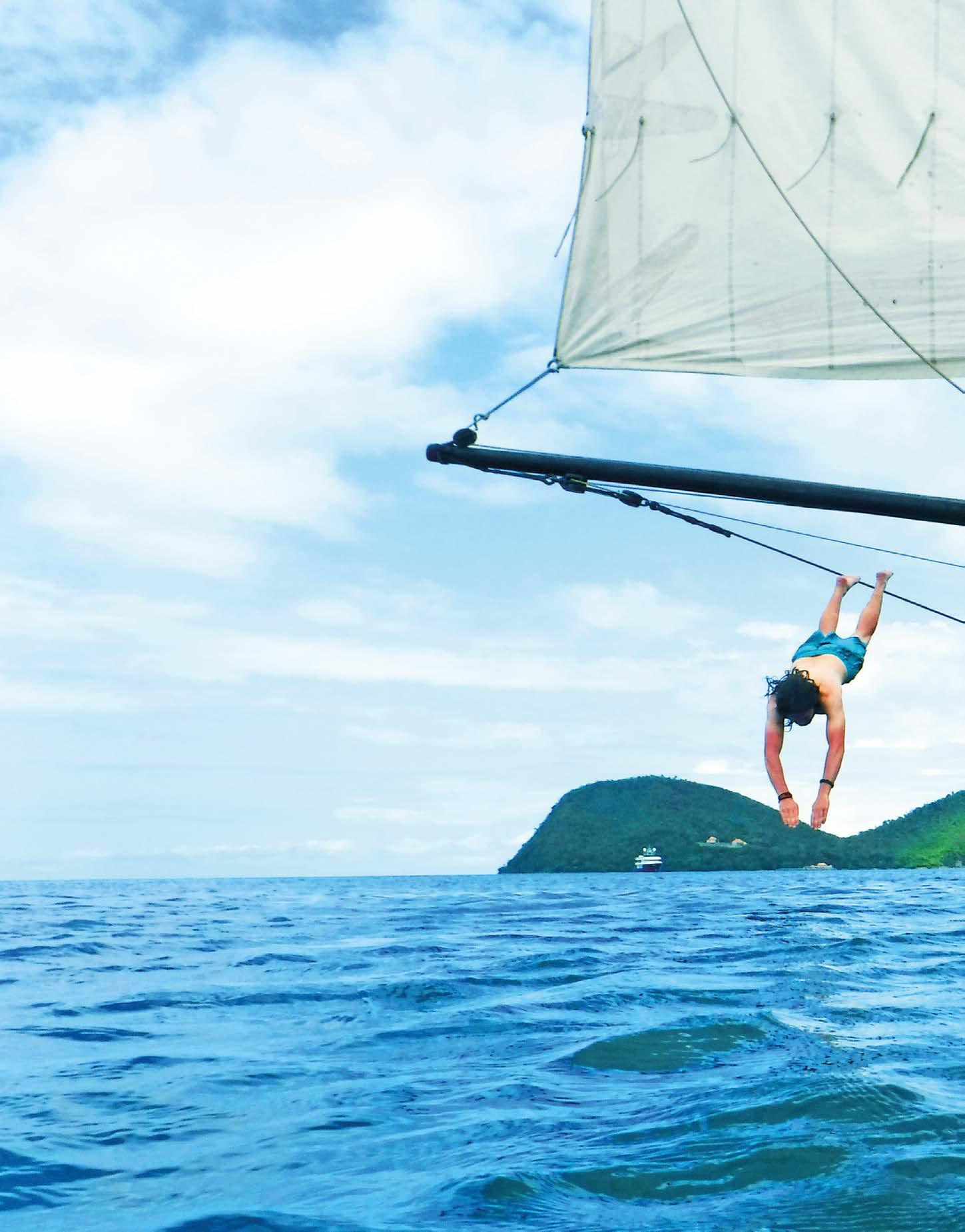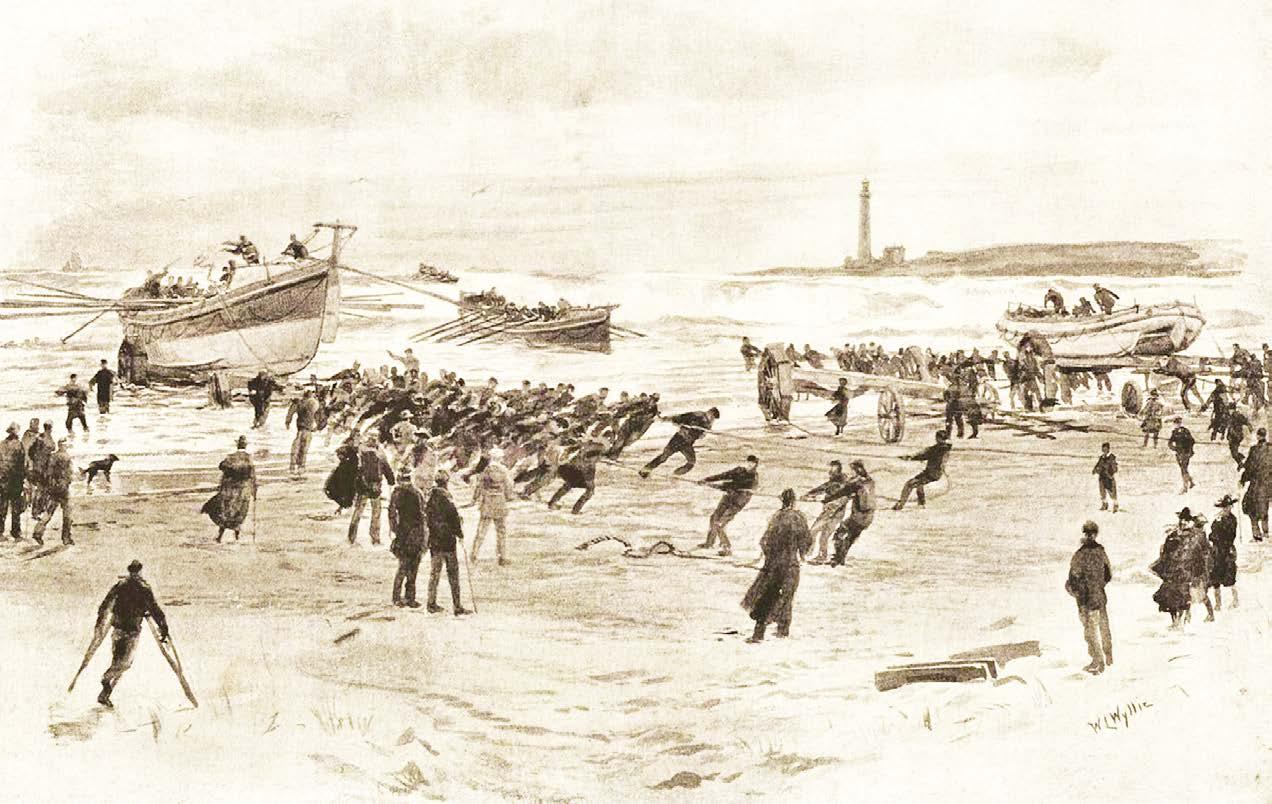



















Tim O’Brien and his staysail schooner LaVolpe are in a love story that goes far beyond financial commitment


The little Aussie fighter Maluka, built in 1932, had already won her class in the Sydney Hobart – twice. Could she do the same in the 2023 Fastnet?
WORDS NIC COMPTON
You have to admire Sean Langman’s pluck. Even before the 2023 Fastnet had begun, he had placed bets on his Maluka – the smallest and second oldest boat in the fleet – beating a Sigma 33 racing in the same class. Not on handicap, mind, but on the water. It seemed like a preposterous idea, a 1932 gaffrigged 28-footer (8.5m) taking on a relatively modern cruiser-racer, never mind the Swan 36 and Sagitta 35 (both S&S designed finkeelers) also racing in that class. But it wasn’t impossible. After all, this little Australian-born survivor had already competed in eight Sydney Hobart races since she was restored in 2006, winning her class in two of them. Could she pull off the same trick on the other side of the world? I had to find out.
Maluka and her crew were in tidying up mode when I visited them at Ocean Village Marina in Southampton three days before the start of the race. Bags were being unloaded, the cabin sole hoovered and tools tidied away in anticipation of a rough passage. Sean proudly showed me the new ‘baby stay’ he had just fitted so that they could set three headsails during the race without affecting the boat’s IRC handicap: a flying jib from the end of the bowsprit, a staysail on the forestay, and the storm trysail on the baby stay.
What was immediately apparent looking at Maluka from the outside was the uncompromising mix of modern and traditional materials. The bowsprit, rubbing strake and capping rail are all made of varnished spotted gum, with its quirky, swirling grain giving a reassuringly ‘woody’ feel. Look more closely and the flawless hu ll is clearly sheathed, while the stout brown mast is painted carbonfi bre. And there are more than enough self-tailing winches, halyard jammers, modern cordage (including Dyneema forestays) and some very expensive-looking laminated sails to get the purists all h ot under the collar.
It so happened that Sean wanted to try out the sails that day, so I joined Maluka for a quick spin around Southampton Water. And what a crew we had. Sean himself is something of a legend in Australian yachting circles, having raced everything from 18ft Skiffs and 49ers as well as 30 appearances in the Sydney Hobart Race. Also on board Maluka was his long-time friend Gordon Maguire (aka ‘Gorgeous Gordy’), a veteran of the Volvo Ocean Race and


The American commuter yacht Hiawatha of the US diplomatic service has been a symbol of American Turkish entente, the subject of a terrorist attack… and these days looks better than ever
WORDS AND PHOTOS BRUNO CIANCI
A charter holiday with a difference enjoying eco-friendly island-hopping in the Caribbean, aboard a replica of an 18th-century revenue cutter
WORDS AND PHOTOS NIGEL SHARP
It was no ordinary Monday morning. Eleven of us were on board the three-masted lugger Grayhound, anchored off the small town of Saint-Louis on the Caribbean Island of MarieGalante and preparing to set sail towards Guadeloupe. With the calm patience and attention to detail to which we had become accustomed over the previous few days, skipper Filémon Darbois explained the step-by-step process by which we would sail off the anchor while avoiding the mass of other anchored boats that surrounded us.
We were anchored in about 5m of water with about 35m of chain out; and, as was usually the case, the mainsail and mizzen were already hoisted as we had left them up overnight to keep us riding head to wind. Then, the mizzen was scandalised, a line was attached to the clew of the main and loosely taken forward, the foremain was hoisted and its clew brailed up towards the top of the foremast, and the jib was made ready. Most of the chain was brought back aboard with the manual windlass, leaving about 12m deployed. Because the anchorage on our port side was the more

crowded, we would be sailing off to starboard, and so after waiting patiently until the bow swung to port and the chain was stretched to starboard, the remainder of the chain was hoisted as quickly as possible, thus pulling the bow to starboard. Simultaneously the jib was hoisted and the foremain unbrailed, and both were backed to port; and the mainsail clew line was pulled forward. With the two aft sails effectively de-powered and the two forward sails backed, Grayhound’s bow turned to starboard and she slowly started to go astern, and with the tiller taken to starboard the rate of turn marginally increased. When the jib was tacked across to starboard and the clew line on the mainsail was released so it could be properly set, Grayhound began to gather way ahead and the tiller was taken to port. Soon we gybed and started sailing on a starboard reach, and


